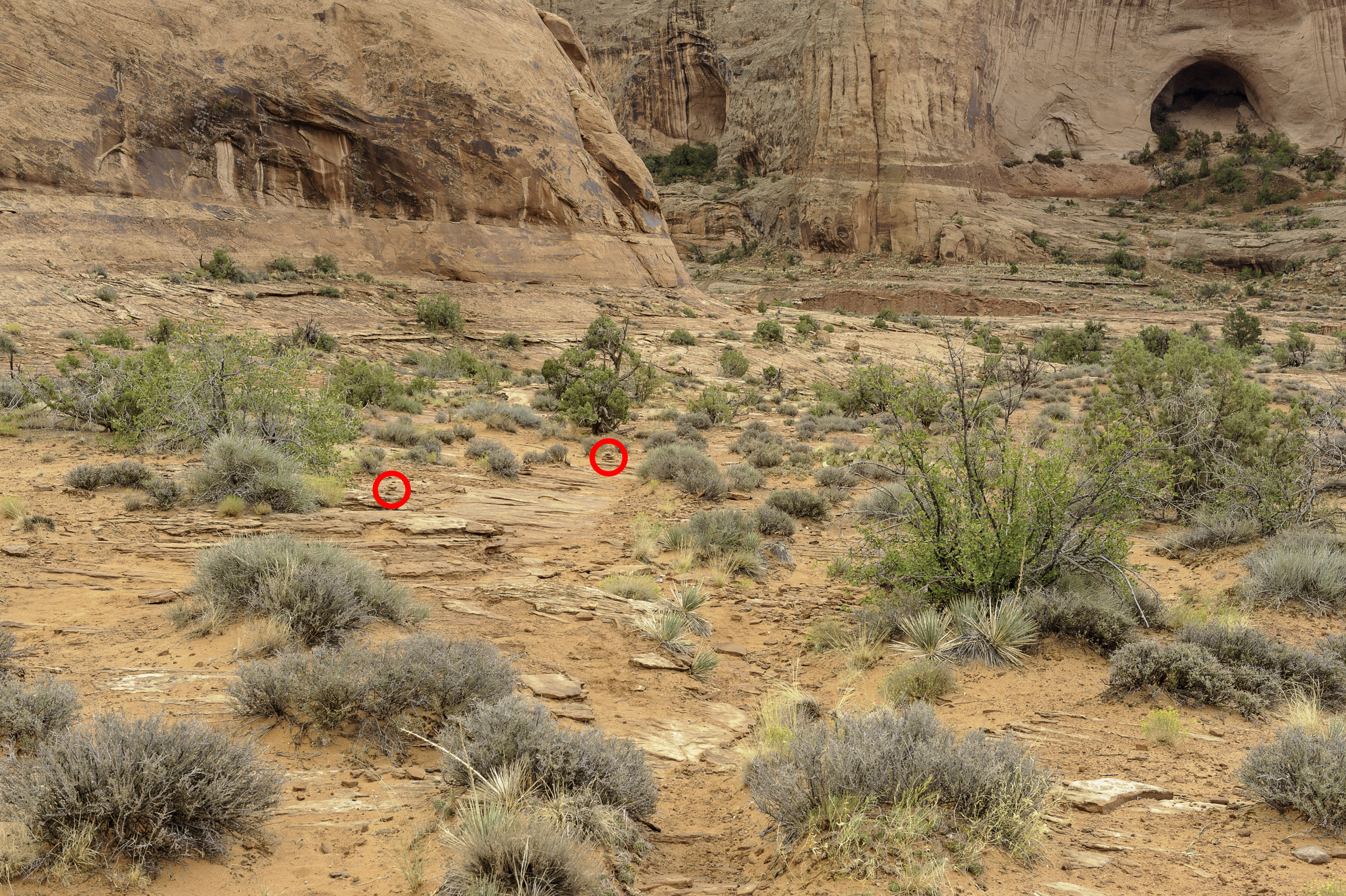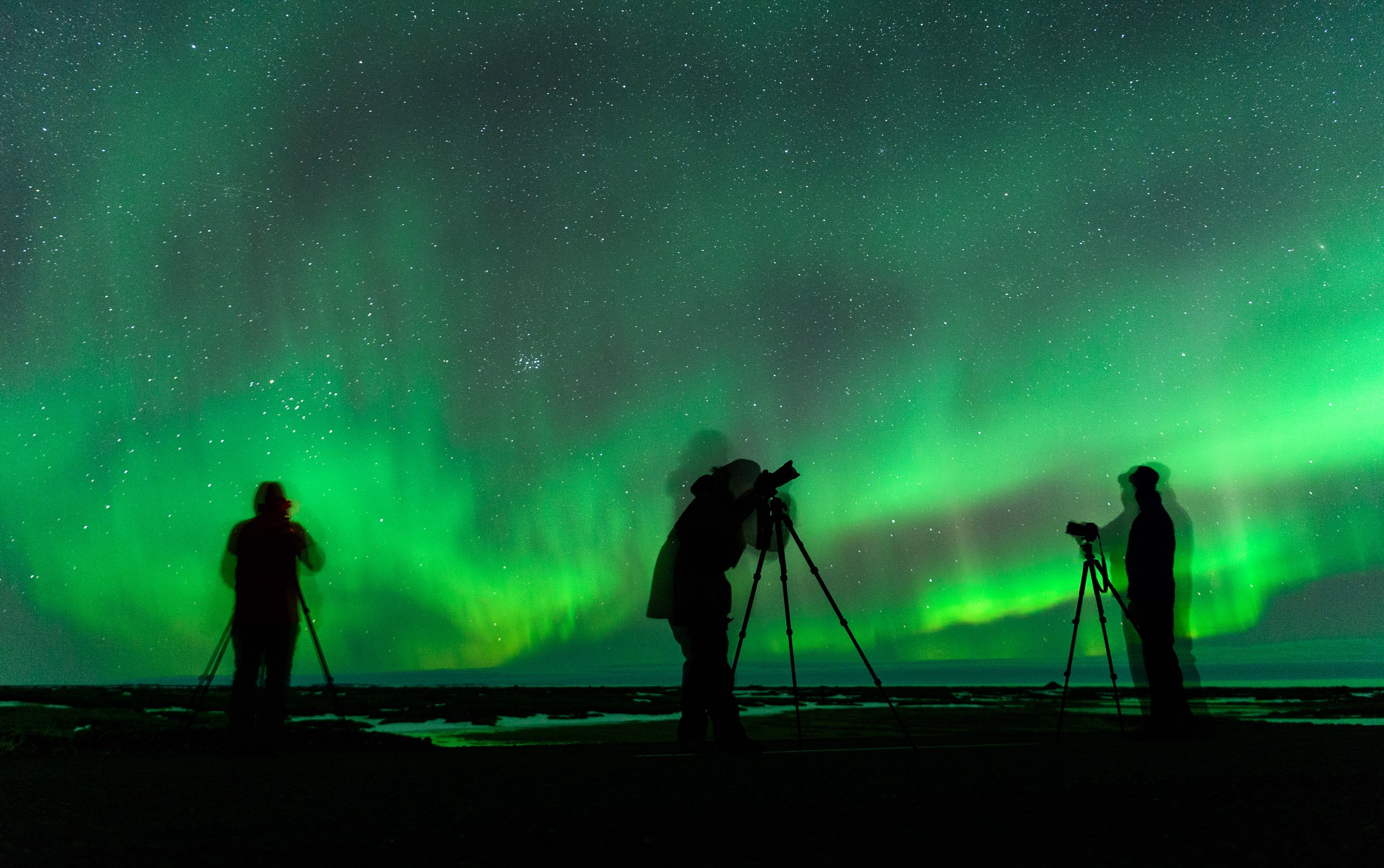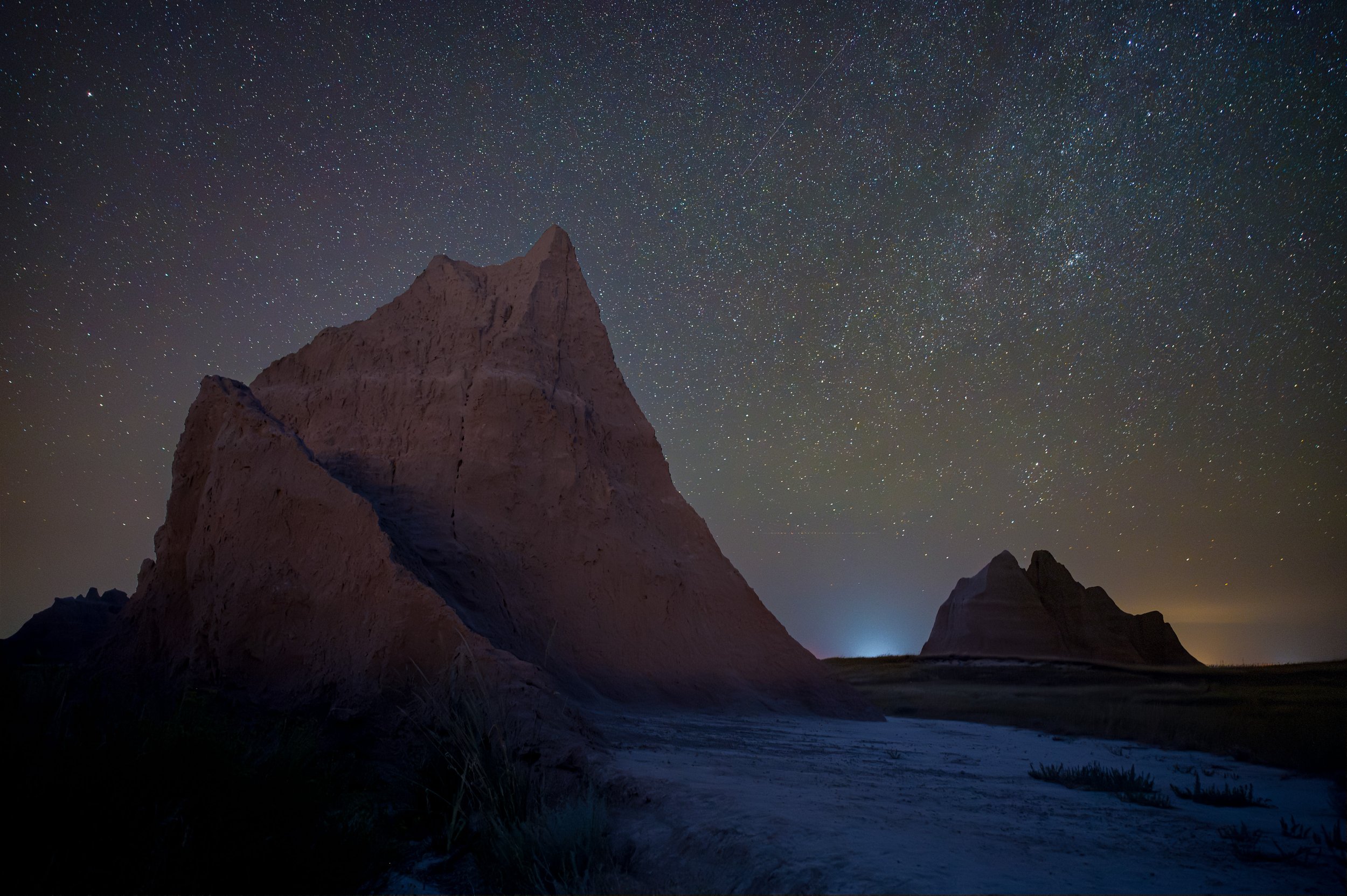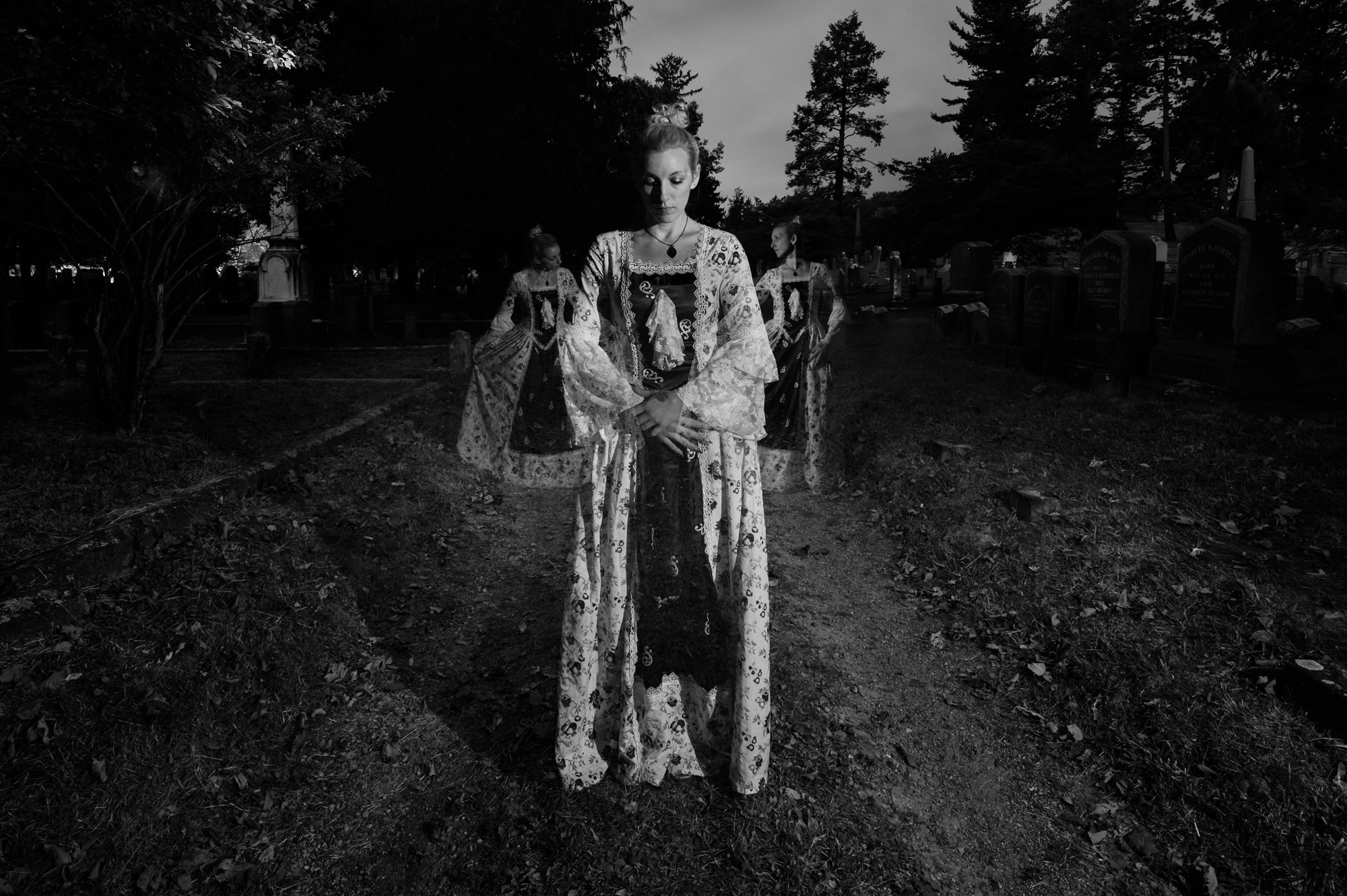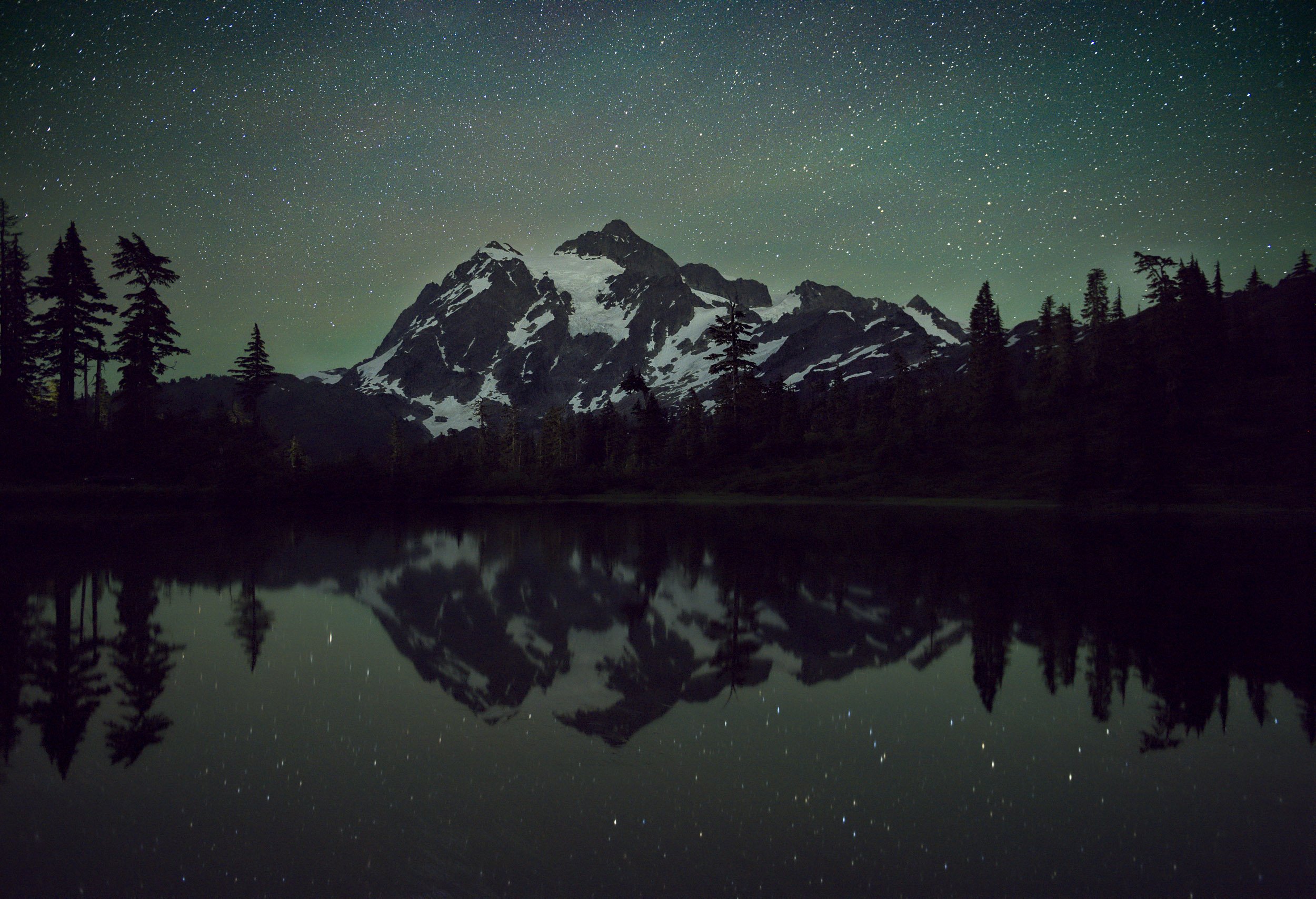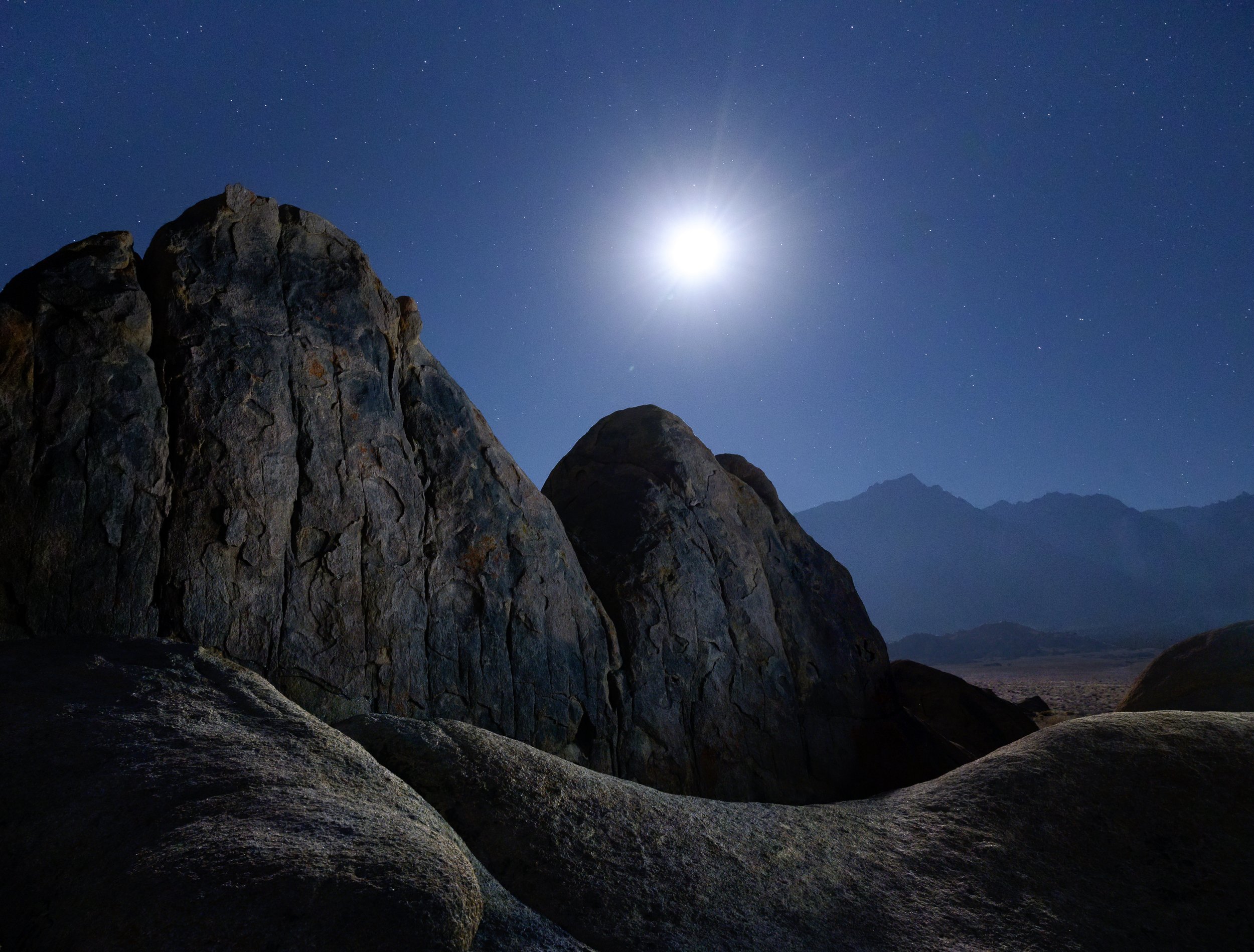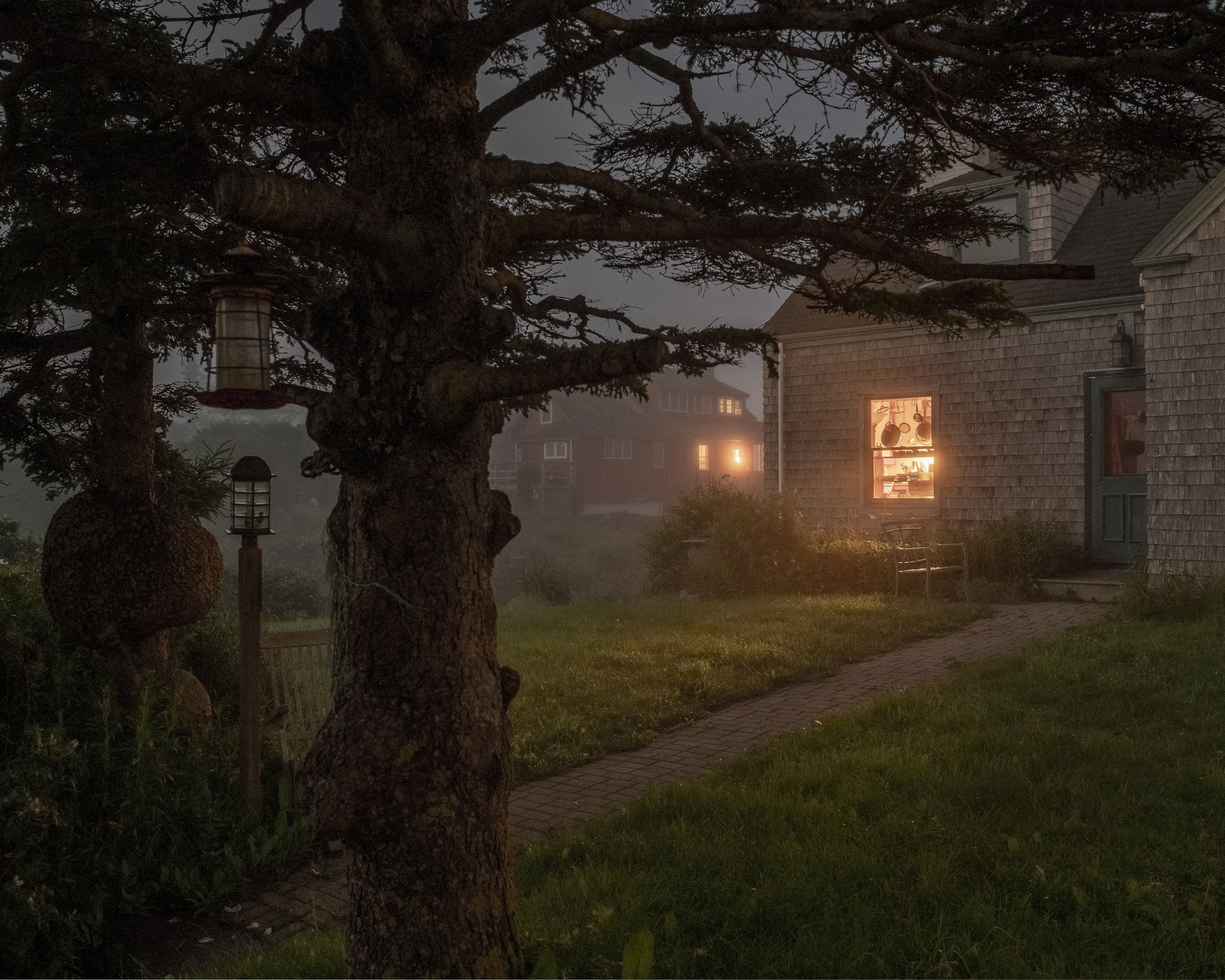What are the odds?
I’m not generally someone who believes in fate, or that the things that happen to us in life are predetermined. But every once in a while something happens to make me question those beliefs.
I recently had such an experience in the California desert southeast of San Diego. It was, if you will, an anti-Lemony Snicket series of events.
Chris and I recently led two back-to-back workshops for Atlas Obscura in California’s Anza-Borrego Desert to photograph Ricardo Breceda‘s amazing animal sculptures of mostly extinct creatures that once roamed the area.
Jurassic Park in the Anza-Borrego Desert. Two life-size dinosaurs battle it out underneath the stars. Nikon D750 with an Irix 15mm f/2.4 lens, mounted on a Manfrotto 190go! tripod with an Acratech GPS ball head, light painted with a Luxli Viola. 25 seconds, f/4.5, ISO 4000.
Nearby Anza-Borrego Desert State Park is one of the remotest and hottest places in California, known primarily for spectacular wildflower displays called “super-blooms” in March and early April after an exceptionally wet winter. The park and the sculptures are the primary attractions of the area. It’s a great location for photographing the Milky Way, as Borrego Springs is an officially designated International Dark Sky Community, and the sculptures are cooperative subjects for light painting.
I had last visited Anza Borrego State Park in 1992—before the sculptures dotted the landscape—so I was eager to explore and to rediscover the area. Chris and I had arrived a couple of days early to scout and shoot for ourselves, and by the end of the first workshop we had been out late photographing for six nights in a row. We were having a blast, but we were tired.
Two bugs in battle. Nikon D750 with an Irix 11mm f/4 lens, light painted with a Luxli Viola. 25 seconds, f/4.5, ISO 6400.
As we were packing up to leave on that sixth night, I set my tripod on the ground to open the rear hatch of our car, and consciously thought that I had to make sure to put the tripod back in the trunk before we left. Somehow, I got distracted, and didn’t. I left my prized Gitzo 2545 Traveler tripod and Acratech GPSS ball head all alone in the desert to fend for themselves. Yes, I know. It was a bone-headed move, and I probably deserved what I got. But it was late, and I was exhausted.
Unfortunately, I didn’t realize my error until the next evening as we were preparing to go out for the night. Once I did realize, we looked everywhere we thought the tripod might be. The car. My room. Chris’ room. Our bags. The meeting space. The hotel lobby (had someone found and returned it?). We even checked the police station—you know, in case the tripod fell in with the wrong crowd. Finally, the previous night’s events played back in my head—I could see myself putting the tripod down, I could remember making a mental note to pick it up, but I couldn’t recall actually putting it in the car. So we hurried back to our last shoot location, the site of the magnificent gomphotherium.
Of course, it was too late. An entire night and day had passed, and someone had long since discovered and made off with my tripod. It wasn’t in front of the gomphotherium. It wasn’t beside the tortoises. It wasn’t under the camels. It was, quite simply, gone.
Chris standing beside the gomphotherium, an extinct elephant that once roamed Southern California. Nikon D750 with a Sigma 24mm f/1.4 Art lens, light painted with a Coast HP7R. 13 seconds, f/2.2, ISO 6400.
Luckily for me, Chris had a second tripod, and he let me work with it for the second workshop. I wasn’t very happy about the situation, but there wasn’t much point in getting angry or upset. Besides, I had a workshop to teach. It turned out to be a great group, and the skies cooperated with us. The time flew by, and it was time to say goodbye.
Then things got interesting. Thus begins the series of fortunate events!
Our fellow National Parks at Night instructor Gabe Biderman received an email from Acratech asking if one of us had lost a tripod in the desert! We have a partner relationship with Acratech, and Gabe has been our point person for contact with them. It seems that my tripod had been found by another photographer, who also happened to own an Acratech. His name is Aeon Jones. Aeon had been scouting the location for a landscape photography workshop that was part of the Palm Beach Photo Festival when he came across my tripod early in the morning—mere hours after I had left it there.
Poor Little Lost Tripod. © 2019 Aeon Jones.
Aeon wanted to get it back to its owner, and thought that perhaps it belonged to someone at the festival, so he carried it around all week hoping someone would recognize it. When no one did, he posted about it to Acratech’s Facebook page. Patty from Acratech saw the post, and wondered if the head had been registered. Aeon sent her the serial number, which showed up in Acratech’s records as having been shipped to NPAN.
By this point, the rest of the NPAN crew had heard my tale of woe, so Gabe already knew that the head was mine. Aeon wanted to be sure the tripod got back to its rightful owner, so, through Patty, he asked for me to confirm some details. I relayed what I knew about the tripod and the location where I lost it. Aeon knew he’d found his guy. He then put the tripod in the mail while he was traveling for a shoot in Moab. I arrived home from my next workshop at Maine Media to find the tripod outside my back door in the rain. The box was dented, soaked and falling apart, but the tripod and head were as good as new.
A bighorn sheep (aka “a borrego”) with the moon rising behind it. Nikon D750 with a Tamron 15-30mm f/2.8 lens, light painted with a Coast HP5R. 15 seconds, f/5.6, ISO 6400.
So back to my original question: What are the odds?
First, the tripod needed to be found by someone who 1) realized its value, 2) was honest and wanted to return it to its owner, and 3) had to be resourceful and dedicated in getting it back to me. Thankfully, Aeon was all of those. The odds that the tripod would be discovered by another photographer who also had a tripod with an Acratech head was unlikely, but luckily for me, that’s what happened.
After Aeon posted to Acratech’s Facebook page, Patty had to see the post and reach out to Aeon for the serial number, and that serial number had to have been registered in my name. I admit, I had not registered it—it was Acratech that kept good enough records to track me down. Once Patty discovered the owner, she had to take time out of her schedule to reach out to us, and then to connect Aeon and myself. From there, my tripod’s fate was in the hands of the U.S. Postal Service. The mail carrier left it on my porch in the rain where it could have been stolen while I was in Maine. But it wasn’t.
I have to admit that I never expected to see this tripod again, and I remember saying to Chris that the chances of someone trying to return it as opposed to keeping it or selling it on eBay were next to none. I thought that the chances of someone actually being able to track me down (my name wasn’t on the tripod) were even more remote.
Aeon Jones, you’ve restored this cynical photographer’s faith in humanity, and for that I thank you. I’ll always remember your good deed, and promise to pay it forward every time I get the chance. (I’m in California looking for lost tripods right now.)
By the way, Aeon told his side of the story on his own blog. To Patty, and the fine folks at Acratech: Thank you for maintaining good records, for responding to Aeon’s post, and for making heads so outstanding that another customer would want to make sure I got mine back.
Aeon Jones. You can read his side of the tale on his blog.






